Best in-ear monitors for guitar players 2025: stay in tune and on time
Plug yourself in with the best in-ear monitors for guitar players from Shure, Sennheiser and more

If you’ve been to any live show in the past few years, there’s a good chance you’ve seen someone using in-ear monitors. They’ve become more and more commonplace, replacing the need for big wedge speakers on stage. The best in-ear monitors for guitar players in particular will mean you can hear every riff, chord and solo in detail.
Grabbing a set of the best in-ear monitors for guitar players can reap a number of benefits. First, you’ll hear what you need to hear clearly. They’re also a good way of protecting your hearing from loud on-stage volumes, plus they can help you pull off a slick live show and even improve your performance.
For me, the best in-ear monitors will offer high quality audio, replicating your guitar’s frequency range perfectly, directly into your ears. They’ll also have a good low-end response so you can keep track of where the bass is in your mix, and they’ll be robust enough to withstand the rigors of regular gigging.
Below, you'll find a range of options, but if you'd like to know my top pick before digging in, I've gone for the Shure SE846 - a premium option for guitarists. The IEMs don't come cheap, but they have customization options and offer balanced audio and excellent sound isolation.
If you're looking for further information, I've included a FAQ section below which should hopefully check any queries you may have about in-ear monitors.
My top picks
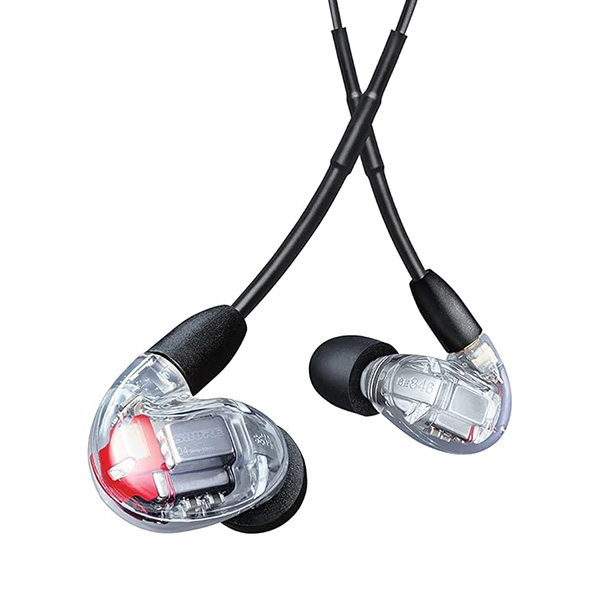
With their brilliant, balanced sound and range of customisable frequency response options, the Shure SE846 are my pick of the bunch. This level of quality comes at a price though, but they really are amazing.

If you're on a budget, the MEE Audio M6 Pro are, in my opinion, the best entry-level IEMs for guitarists. As you'd expect, they don't perform as well as premium models, but they're above average and offer a comfortable fit.
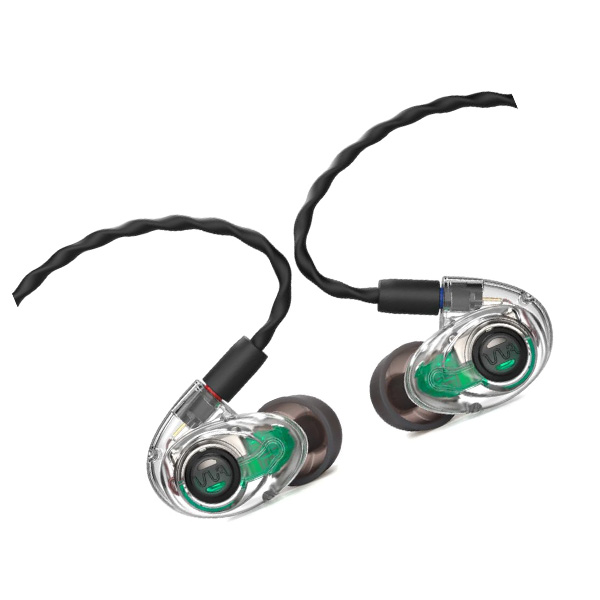
Boasting rich and detailed sound, the Westone AM Pro X30 are a versatile choice and an excellent mid-range option. They're comfortable thanks to their lightweight design and they allow ambient noise in - great for gigs.
Best overall
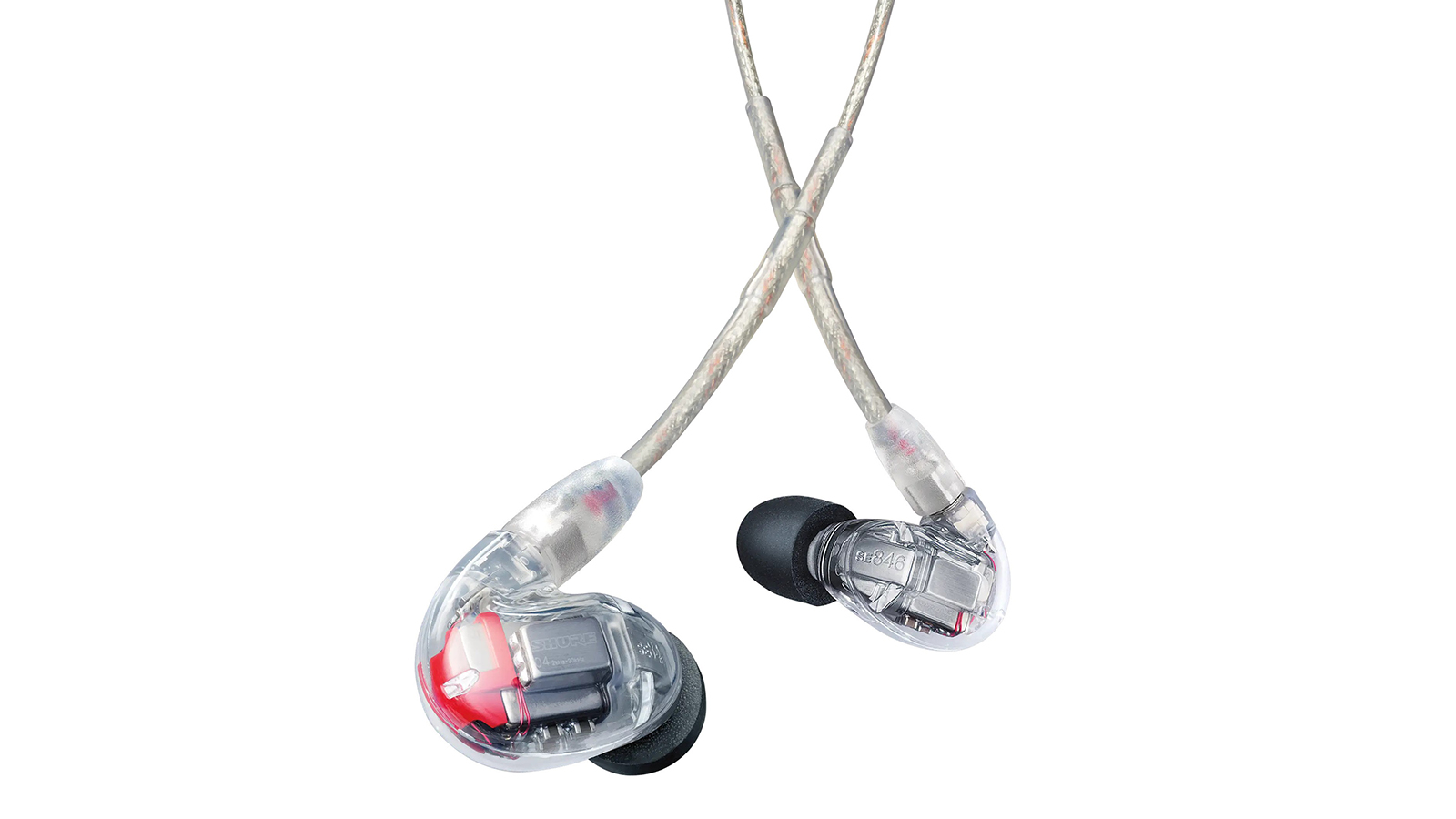
1. Shure SE846
Our expert review:
Specifications
Reasons to buy
Reasons to avoid
✅ Buy if you want a pair of top of the range IEMs: They come at a price, but for the money, these in-ear monitors are hard to beat.
❌ Avoid if you're on a budget: The cost will, understandably, put guitarists off and there are other excellent and cheaper options available.
Sounds: ★★★★★
Comfort: ★★★★½
Build quality: ★★★★½
Overall: ★★★★½
The Shure SE846s in-ear monitors are a top choice for guitarists due to their exceptional sound quality and robust build. They feature four high-definition drivers that deliver a clear and balanced sound, which makes them perfect for hearing the full range of your guitar.
The SE846 also include customizable frequency response settings, and this allows you to tailor the sound to your preference. Sound isolation with these in-ears is excellent, providing up to 37dB of ambient noise reduction, ensuring you can focus on your performance.
However, the big downside with the Shure SE846 is that they come with a high price tag, and some users might find the fit slightly bulky.
Best budget
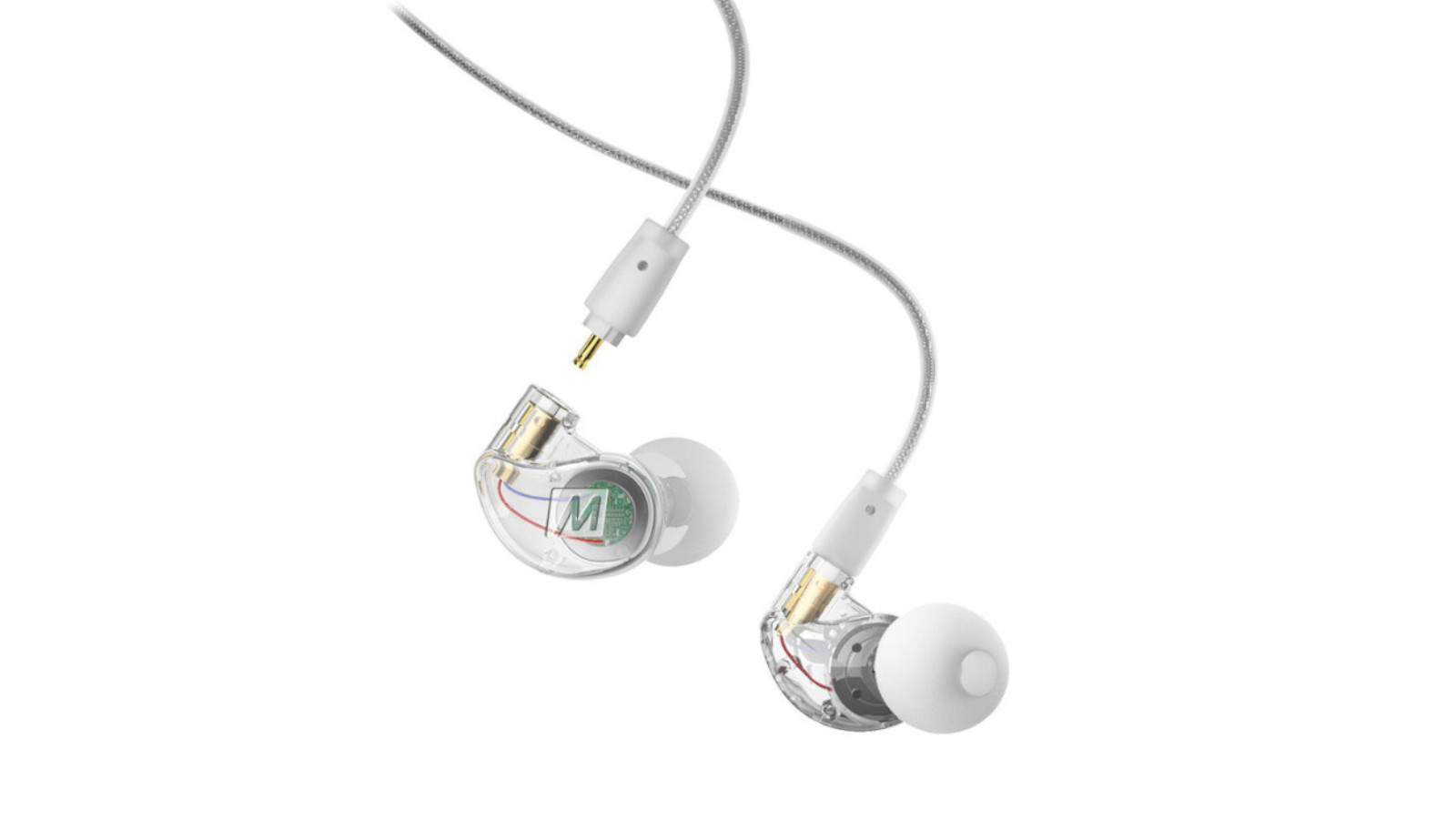
2. MEE Audio M6 Pro
Our expert review:
Specifications
Reasons to buy
Reasons to avoid
✅ Buy if you're on a tight budget: While the M6 Pros can't compete with more expensive models, for the price, these are an excellent budget option.
❌ Avoid if you're a more experienced player: As entry-level IEM, these are great, but veterans should look elsewhere.
Sounds: ★★★★☆
Comfort: ★★★★☆
Build quality: ★★★★½
Overall: ★★★★☆
For guitarists seeking a budget-friendly yet reliable set of in-ear monitors, the MEE Audio M6 PRO are an excellent choice. These IEMs offer great value with their clear and balanced sound, thanks to the single dynamic driver that delivers good detail across all frequencies.
The flexible memory wire ensures a secure and comfortable fit, which is crucial for long practice sessions and performances. The M6 PRO also boast impressive noise isolation, helping guitarists stay focused even in noisy environments. Durability is another strength, with a detachable, replaceable cable that adds longevity to the product.
While the sound quality may not match higher-end models, the MEE Audio M6 PROs provide an excellent entry point for guitarists looking to enhance their audio experience without breaking the bank.
Best mid-range
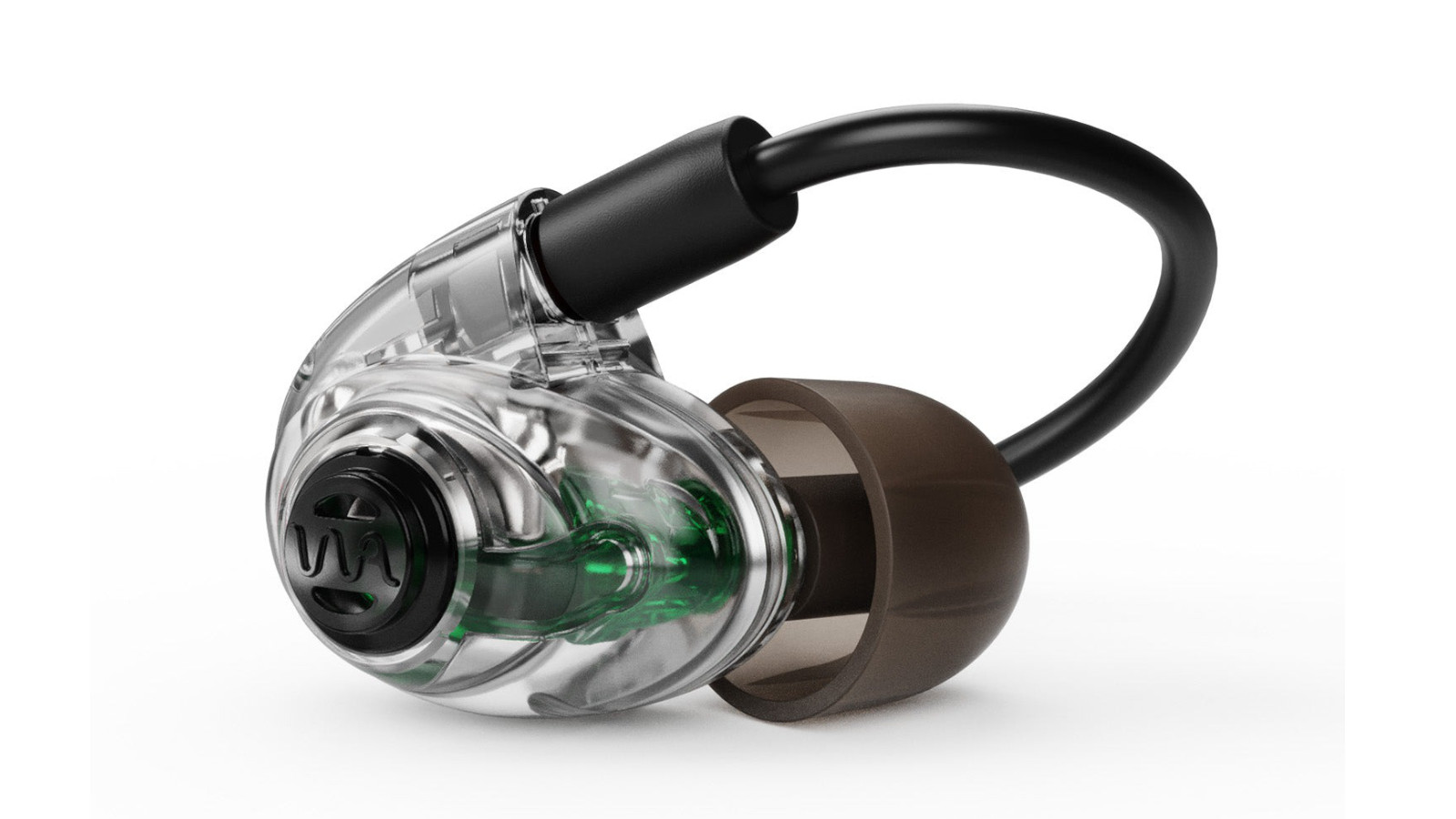
3. Westone AM Pro X30
Our expert review:
Specifications
Reasons to buy
Reasons to avoid
✅ Buy if you want a pair of in-ears for a live setting: The AM Pro X30 allow ambient noise in, making them a neat option for live performance.
❌ Avoid if you want customization options: The lack of customization found in some other models will annoy some.
Sounds: ★★★★☆
Comfort: ★★★★½
Build quality: ★★★★½
Overall: ★★★★½
The Westone AM Pro X30 are a versatile choice, featuring three balanced armature drivers that offer a rich and detailed sound. They excel in delivering a well-balanced mix of lows, mids and highs, crucial for guitarists needing clarity in every note.
The compact and lightweight design ensures comfort and a secure fit. Their party trick is the way they allow some ambient noise in, making them great for live performance where hearing the feedback from the crowd and your bandmates can be a positive thing.
On the downside, the AM Pro X30 lack some of the customisation options found in higher-end models, but their performance and comfort make these a great mid-range option.
Best single driver
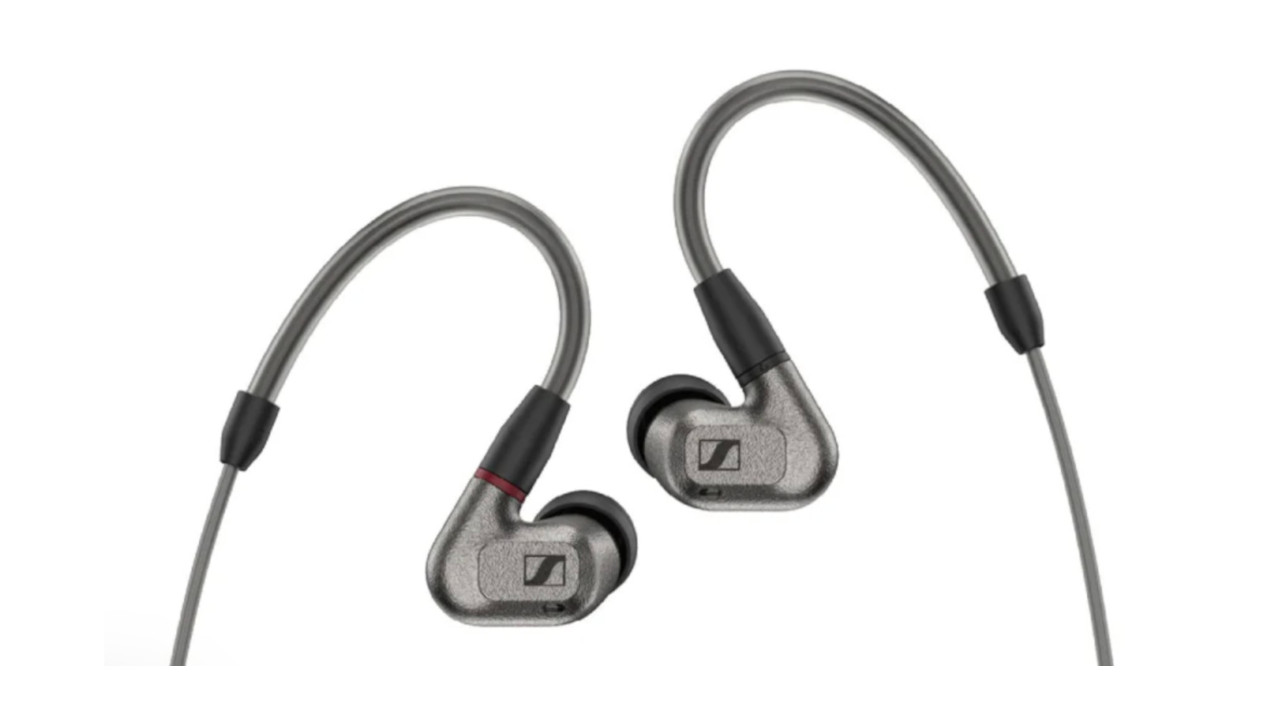
4. Sennheiser IE600
Our expert review:
Specifications
Reasons to buy
Reasons to avoid
✅ Buy if you want crystal clear audio in the mid price range: The Sennheiser IE600 are durable and offer outstanding audio.
❌ Avoid if you're looking after the pennies: They're mid-price, but still a pricy pair of IEMs that will price some out.
Sounds: ★★★★½
Comfort: ★★★★½
Build quality: ★★★★½
Overall: ★★★★½
The idea behind this incredible set of in-ear monitors from Sennheiser is to replicate the same sort of nuance and dynamics that you get with monitor speakers. This means you’ll hear every minute detail of your playing, making them perfect for bands that utilize a wide dynamic range.
The single driver offers an brilliant, fast response across the entire frequency range, allowing you to hear everything that’s going on in the mix.
The casing of the earphones is made from a resistant metal that’s even stronger than steel and is also resistant to corrosion and scratches. The cable is super hard-wearing too, and you get three sets of foam and three sets of silicone earbuds included in the box.
Best for bass

5. Ultimate Ears UE 11 Pro
Our expert review:
Specifications
Reasons to buy
Reasons to avoid
✅ Buy if you're a bass player: With lovely low-end reproduction and top-notch isolation, these are a great fit for bassists.
❌ Avoid if bass isn't your thing: The Ultimate Ears UE 11 Pro are simply better suited to bassists than guitarists.
Sounds: ★★★★½
Comfort: ★★★★½
Build quality: ★★★★½
Overall: ★★★★½
The Ultimate Ears UE 11 Pro are a premium option, known for their quad-armature design that provides incredible detail and clarity. They feature a dedicated driver for bass, making it perfect for guitarists – and bass players – who want to feel the depth of their lower notes.
The custom-molded fit ensures unparalleled comfort and sound isolation. Robust build quality makes them a durable choice for professional use. However, the custom-molding process and high price might be prohibitive for some, but the investment is worthwhile for serious musicians seeking top-tier performance.

"While it’s a lot to spend on headphones, the UE 11 PROs are the state of the art in bass-tailored in-ear monitoring."
Read more: Ultimate Ears UE 11 Pro review
Best home studio
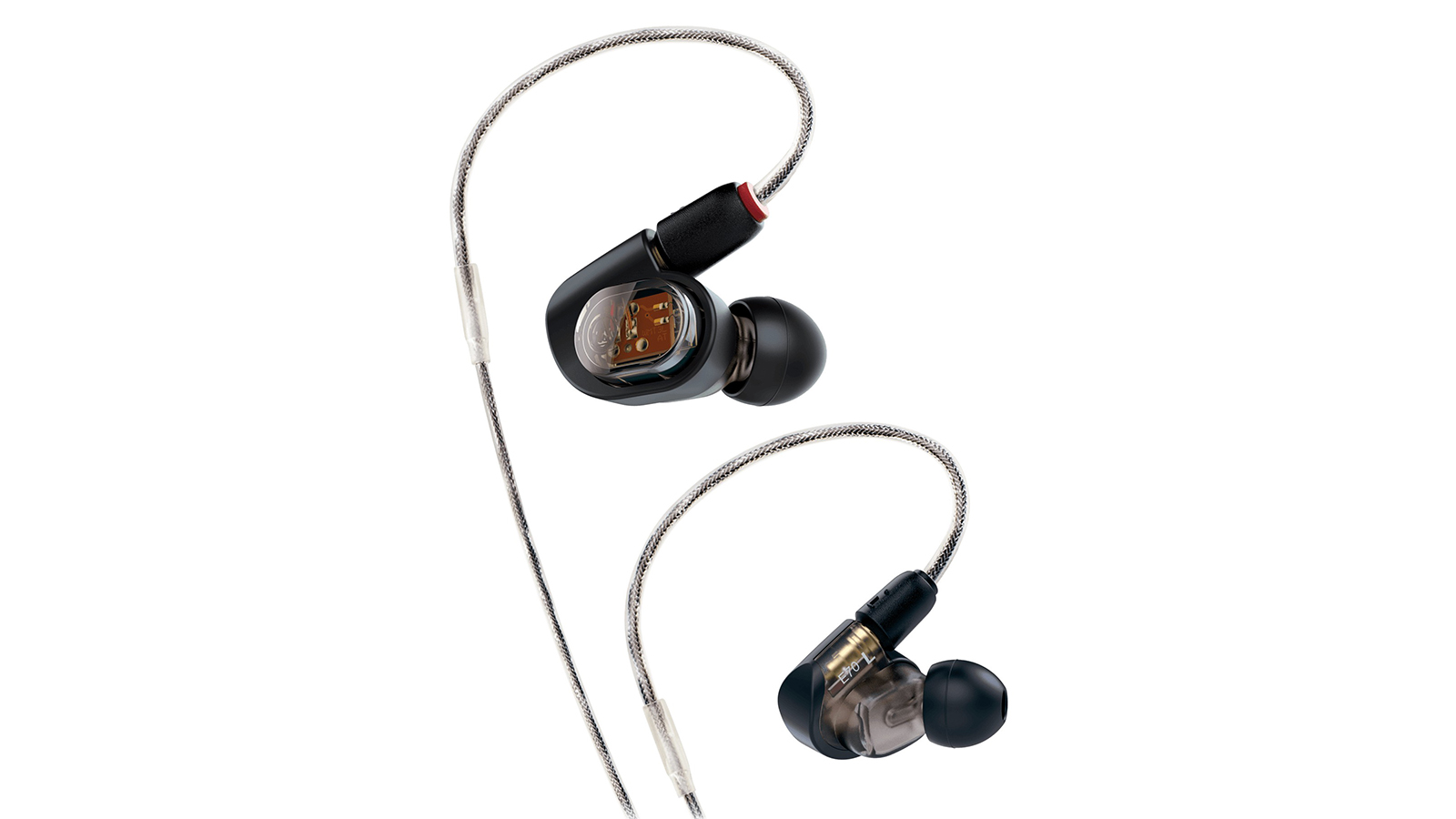
6. Audio-Technica ATH-E70
Our expert review:
Specifications
Reasons to buy
Reasons to avoid
✅ Buy if you're after a pair of IEMs for the home studio: Comfortable with excellent sound isolation makes the ATH-E70 a nice option for the home studio.
❌ Avoid if you're a bass player looking for a new pair of IEMs: The sound profile here might be a little too flat for home studio bass players.
Sounds: ★★★★☆
Comfort: ★★★★☆
Build quality: ★★★★½
Overall: ★★★★☆
The Audio-Technica ATH-E70 are praised for their accurate sound reproduction, thanks to their triple-armature drivers, which deliver a balanced and natural sound, allowing guitarists to hear their instrument clearly in any mix. The design offers good comfort and sound isolation, essential for stage and studio use.
One of this model's strengths is the durable build and detachable cable, adding to the IEMs' longevity. However, some users may find the fit less secure compared to custom-molded options, and their sound profile might be too flat for those preferring more pronounced bass.
Best customization
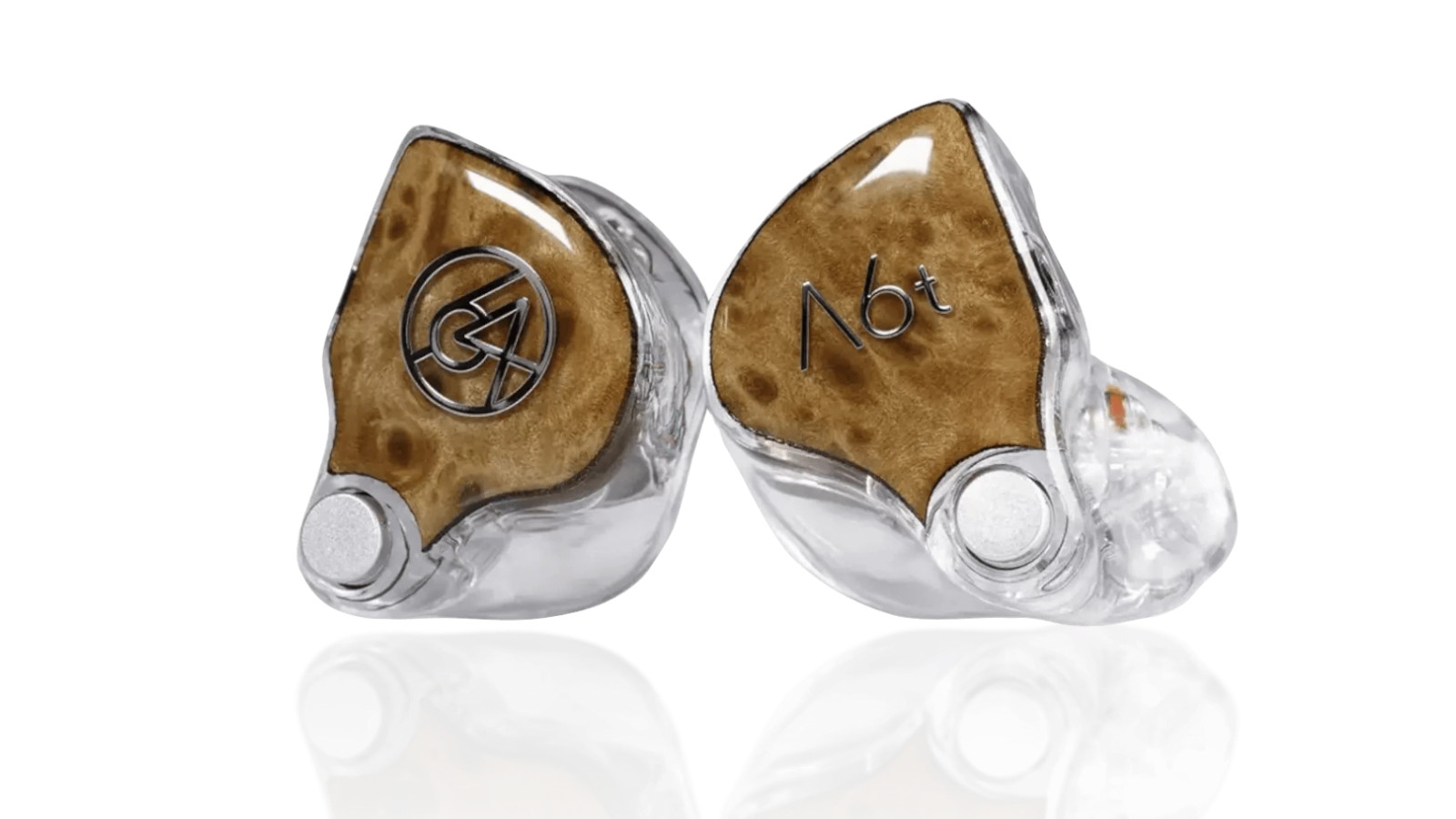
7. 64 Audio A6t
Our expert review:
Specifications
Reasons to buy
Reasons to avoid
✅ Buy if you want top-tier isolation: With a custom-molded fit, you'll get awesome sound isolation with the 64 Audio A6t.
❌ Avoid if you want a pair of read to go IEMs: The custom nature of the 64 Audio A6t means an extra step before you can use them.
Sounds: ★★★★½
Comfort: ★★★★½
Build quality: ★★★★½
Overall: ★★★★½
The 64 Audio A6t in-ear monitors stand out with their six-driver configuration, offering a wide and dynamic soundstage. They are specifically designed to provide a balanced sound, making them ideal for guitarists who are looking for precision across all frequencies.
The custom-molded fit ensures excellent comfort and top-level noise isolation and one unique feature is the apex module, which reduces ear fatigue by allowing air pressure to escape.
While their customization and sound quality are top-notch, the A6t are on the pricier side, and don't forget that the custom fit process does require an extra step for users.
Best value

8. Shure SE425
Our expert review:
Specifications
Reasons to buy
Reasons to avoid
✅ Buy if you want a robust and affordable pair of IEMs: Available for a great price and built to last, don't ignore the Shure SE425.
❌ Avoid if you're looking for a stylish pair of IEMs : Great value they might be, but they're not the best looking IEMs around.
Sounds: ★★★★☆
Comfort: ★★★★☆
Build quality: ★★★★½
Overall: ★★★★☆
Boasting crisp highs and strong and responsive lows, the Shure SE425 IEMs offer guitar players everything they need in terms of monitoring to perform live. They’re also sound-isolating, which isn’t the same as noise-cancelling – it’s a more natural way of blocking out external sound. It means they will essentially work as really good earplugs as well as monitors.
In addition to this, the design of the earbuds allows the sound to emanate closer to your eardrum so the actual volume can be lower, protecting your hearing in the long run.
The cable is detachable from the earphones so if something goes wrong later down the line, it’s likely that you’ll just have to replace the cable instead of the whole thing. You also get a range of foam earbuds to choose from, allowing you to get them as comfortable as possible.
FAQ
Opting for a set of in-ear monitors will no doubt change how you approach live shows, but which one is right for you? There are lots on offer right now, all covering different budgets, so here are some considerations to make first.
Do I need in-ears monitors?
If you’re reading this, then there’s a good chance you’re either already using in-ear monitors, or you’re considering taking the leap. Using in-ear monitors has a number of benefits.
First, they save your hearing. If you’re playing with a drummer, things can get pretty noisy, and as great as earplugs are, most people find they can’t quite hear themselves properly with them in, so you might loosen them slightly in your ear when in the middle of a show.
Using IEMs means you can hear yourself and your band properly, but more importantly, you’re protecting your ears from those loud stage volumes and potentially helping ward off future hearing problems.
In-ear monitors can allow you to hear your mix more clearly. When they’re in, most of them block out quite a bit of stage noise, so what’s being fed through the earphones you can hear nice and clearly. This is particularly useful for guitar players who also sing, as it’s easier to pitch when you can hear yourself properly.
In my experience as a guitar player, all the earplugs I’ve tried (and I’ve tried a lot) block out some of the important frequencies that I need to hear. It’s not impossible to get through a gig by any means, but since switching to IEMs, it’s hard to go back.
As guitarists, we all take care in crafting our tone, so when you hear it back in high fidelity through your in-ears, it’s really rewarding. I find that this then helps me play with more dynamics and more expression, so it’s better for the performance too.
Comfort
You can trust Guitar World
Comfort is incredibly important when it comes to in-ear monitors. It’s hard to judge how comfortable something will be until actually experiencing it, but when shopping for in-ear monitors, you can look out for models that have interchangeable earbuds and maybe a few different sizes of eartips included.
Of course, for the most comfortable experience, you can go down the custom route. There are many companies out there that take molds of your ears from which to make custom earpieces that fit perfectly in your ear.
Sound quality
The main point of in-ear monitors is to be able to hear yourself properly. As with anything audio-related, the market offers various levels of quality. If you’re playing in local bars but you want to save your ears while still being able to hear yourself, then something at the lower end of the options I've listed above will be fine.
If you’re playing at bigger venues with better PA systems, higher quality mics, preamps etc, then investing in IEMs that offer high-fidelity sound quality will certainly benefit you.
In-ear monitors that provide a clear and balanced frequency range and lots of dynamics will allow you to hear everything that’s going on in the mix so you can adjust your playing as necessary.
A similar thing can be said for the studio. Whether you’re tracking or mixing, using in-ear monitors can provide a different listening experience and, when used alongside monitor speakers, can result in better, more well-rounded mixes
How we choose in-ear monitors
Here at Guitar World, we are experts in our field, with many years of playing and product testing between us. We live and breathe everything guitar and bass related, and we draw on this knowledge and experience of using products in live, recording and rehearsal scenarios when selecting the products for our guides.
When choosing what we believe to be the best pedal amps available right now, we combine our hands-on experience, user reviews and testimonies and engage in lengthy discussions with our editorial colleagues to reach a consensus about the top products in any given category.
First and foremost, we are guitarists, and we want other players to find the right product for them. So we take into careful consideration everything from budget to feature set, ease of use and durability to come up with a list of what we can safely say are the best pedal amps on the market right now.
First and foremost, we are guitarists, and we want other players to find the right product for them. So we take into careful consideration everything from budget to feature set, ease of use and durability.
Read more about our rating system, how we choose the gear we feature, and exactly how we test each product.
Why you can trust us
☑️ A global audience of 3.8 million guitarists monthly
☑️ 1,200+ reviews on GuitarWorld.com
☑️ 30+ years of product testing at Guitar World
Guitar World boasts more than 44 years of expertise and stands as the ultimate authority on all things related to guitars. The magazine and website feature expertly written gear round-ups and top-quality, authoritative reviews penned by a team of highly experienced industry professionals.
Guitar World's inaugural print issue hit the shelves in July 1980, and ever since, it has been captivating players and enthusiasts with engaging lessons, insightful interviews with the biggest guitar heroes, and priceless buying advice for newbie players.
Furthermore, GuitarWorld.com continues this legacy online and serves as the hub of the world's foremost authorities on guitar playing. The site not only hosts content from Guitar World but also showcases articles from respected publications such as Guitarist, Total Guitar, Guitar Techniques, and Bass Player.
With a reach extending to 3.8 million players each month, GuitarWorld.com is a go-to destination for guitar fanatics globally.
Meet the experts

Chris Corfield is a journalist with over 12 years of experience writing for some of the music world's biggest brands including Orange Amplification, MusicRadar, Guitar World, Total Guitar and Dawsons Music. Chris loves getting nerdy about everything from guitar gear and synths, to microphones and music production hardware.

After spending a decade in music retail, Richard is now a freelance writer for MusicRadar, Guitar Player, Guitar World and Reverb, specialising in electric and acoustic guitars, bass, and almost anything else you can make a tune with. When his head’s not buried in the best of modern and vintage gear, Richard runs a small company helping musicians with songwriting, production and performance, and plays bass in an alt-rock band. Otherwise, you'll probably find him out walking the dog!
All the latest guitar news, interviews, lessons, reviews, deals and more, direct to your inbox!
Chris Corfield is a journalist with over 12 years of experience writing for some of the music world's biggest brands including Orange Amplification, MusicRadar, Guitar World, Total Guitar and Dawsons Music. Chris loves getting nerdy about everything from guitar gear and synths, to microphones and music production hardware.
